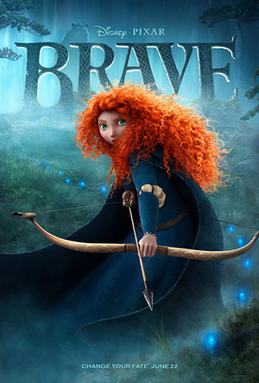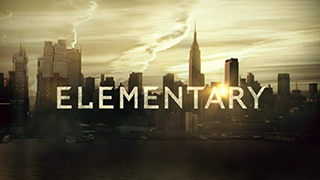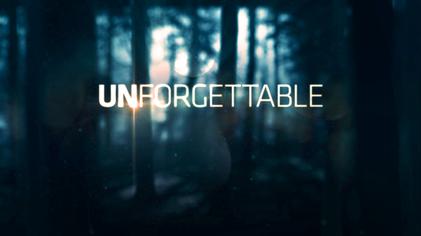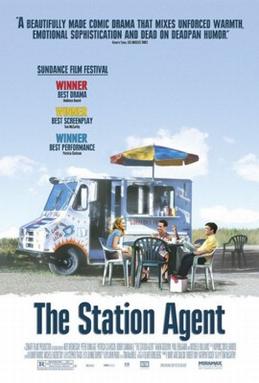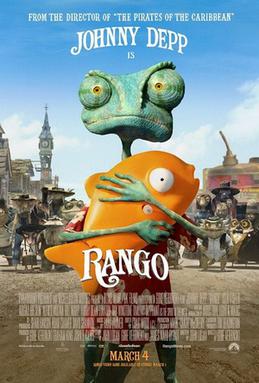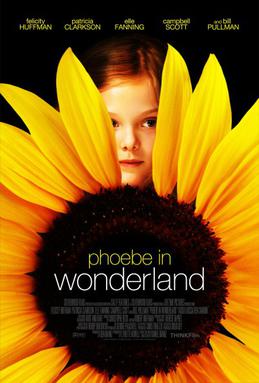Earlier this year, I
wrote
that there were no new compelling TV shows in the fall lineup. Well, I am
here now to declare myself a liar. Recently, a friend was telling me about the
new CBS show
Elementary, which
features a modern-day Sherlock Holmes, and how she was enjoying it. Previously
I had heard only a little bit about the show and didn’t think I would be interested.
After her recommendation though, I decided to give it a try.
Once I watched the pilot of
Elementary, I dove right into the rest of the episodes that have
aired so far (albeit there’s only been four all together). The show is on
Thursday evenings, but since I watch all my TV on the web now, that means I
have to wait until Fridays to watch the latest episode. I know many people love
to go out on the town on Fridays, declaring it the beginning of the weekend and
all kinds of fun, but I’m generally exhausted by then. I like to stay home, do
some laundry, catch up other things, and watch something on Hulu or Netflix. So
I’m pretty pleased that
Elementary will
be available to me on Fridays; I’m already sensing it will be become part of my
Friday routine.
But less about my dull life and more about the show! Elementary, as I’ve already mentioned,
is a modern-day take on Sherlock Holmes. Holmes (Jonny Lee Miller) is a
recovering drug addict, having picked up a nasty heroin addiction while in London. In order to stay
in his father’s good graces (and thus retain residence in his New York City apartment), Holmes has been
assigned a sobriety partner in the person of Joan Watson (Lucy Liu), a former
surgeon. Having met police captain Gregson (Aidan Quinn) in the past and wowed
him with his powers of deductions, Holmes has managed to secure himself a
position as a NYC police consultant, helping with tough-to-crack kidnappings
and murders. Rounding out the cast of characters is police detective Marcus
Bell (Jon Michael Hill).
First off, let’s start by looking at the characters that
make up
Elementary. One of the most
compelling things – if not
the
compelling thing – about the show is the character of Holmes. Expertly played
by Jonny Lee Miller, who I have loved in the past (excepting the terrible
disappointment of
Dark
Shadows),
Elementary’s Holmes
is a great new take on a classic character. Sure, A.C. Doyle’s Holmes didn’t
require a sobriety partner per se, but he was indeed a habitual drug user. For
just one instance of this, in
The Adventures
of Sherlock Holmes, it is noted that Sherlock spends his time “buried
among his old books, and alternating from week to week between cocaine and
ambition, the drowsiness of the drug, and the fierce energy of his own keen
nature.”
We are first introduced to Holmes in
Elementary with a woman departing from his residence; Holmes
quickly explains to Watson that he has no interest in relationships but is
occasionally driven by his animal nature to seek out sex. While
Elementary’s Watson later insists this
is because Holmes is afraid of commitment, A.C. Doyle’s Dr. Watson explains of
Holmes: “All emotions, and that one [love] particularly, were abhorrent to his
cold, precise but admirably balanced mind. He was, I take it, the most perfect
reasoning and observing machine that the world has seen, but as a lover he
would have placed himself in a false position. He never spoke of the softer
passions, save with a gibe and a sneer. They were admirable things for the
observer—excellent for drawing the veil from men’s motives and actions. But for
the trained reasoner to admit such intrusions into his own delicate and finely
adjusted temperament was to introduce a distracting factor which might throw a
doubt upon all his mental results. Grit in a sensitive instrument, or a crack
in one of his own high-power lenses, would not be more disturbing than a strong
emotion in a nature such as his.” Doyle’s frequent references to Sherlock’s
cold and reasoning mind have lead some to suspect that
he
might have Asperser’s syndrome; Jonny Lee Miller plays Holmes in this way
also – he is often brusque and unfeeling in his speech to others, particularly
potential suspects, witnesses, and even friends and family of victims. At
times, he is downright dismissive of Watson, saying things like, “Situations
like these cases require my total concentration. I talk to you, never the other
way around.” or “For future reference. When I say I agree with you, it means
I'm not listening.” But while he’s sometimes irritatingly arrogant, he’s also
lovably quirky and endearing.
And, of course, the Sherlock Holmes of Elementary is a stickler for details, observant to a fault, highly
knowledgeable, and able to draw large inferences from the slightest thing
seemingly off at a crime scene. In this respect, he is very much like his 19th
century counterpart, who has famously said such things as, “It has long been an
axiom of mine that the little things are infinitely the most important.” But,
in line with bringing things into the 21st century, this Holmes also
uses Google to make some of his pronouncements and loves the brevity of
texting. And while this Holmes does have a superiority complex that allows him
to view himself as above the police, he seems to value them more than the
original Sherlock and certainly relies upon them more as he does not (as of
yet) take in any private consulting cases. This is very unlike Doyle’s Holmes
who primarily worked on private cases, which only occasionally called for the
assistance of the police.
Elementary’s Watson,
however, does not strike me as very similar to her 19
th century
counterpart. For starters, I think the show’s creators missed a golden
opportunity by not making her a veteran like Doyle’s Dr. Watson – it just seems
too absurd not to when history has conspired to make it possible to plausibly
have a modern-day Watson also be an army surgeon who served in Afghanistan. And
wouldn’t it have been delicious for Holmes’s first line when meeting Watson to
be, “You have been in Afghanistan,
I perceive,” as he pronounced upon their initial acquaintance in
A Study in
Scarlet? But, I have to admit that Watson’s past, hinted at only
briefly so far, as a surgeon who lost a patient under suspicious circumstances
could potentially become more interesting and add some depth to her character.
(Of course, I could also argue that making her an army vet, perhaps suffering
from what she’s seen of war, could provide depth and an interesting back story
that continues to surface occasionally.) I do love that the creators decided to
make Watson female in this version, showing that these characters can indeed
transcend time, place, and even sex.
But, unfortunately, so far I have found Watson to be a
fairly dull character. True, I doubt many people would have devoured – and
continue to do so – the original Sherlock Holmes canon for Watson alone, but I
felt that telling the stories through his eyes always gave the reader a
tenderness toward Watson and a feeling that he had a more active role in the
cases. Making Watson a sobriety partner rather than a retired army surgeon with
times on his hands changes that dynamic very much. Instead of Watson coming
along to help unravel a mystery out of his own interest or Holmes’s request for
assistance of some sort or another, Watson is merely tagging along out of
necessity and frequently standing on the sidelines without engaging at all.
However, there have been a few times already when Watson has
provided medical knowledge or has somehow figured into Holmes’s scheming to get
information or signal the police for assistance. I hope to see more of this in
the future, with
Elementary’s Watson
taking on an increasing role just as Doyle’s Watson did over time, reaching the
point where Holmes could say of his assistant in
The
Hound of the Baskervilles: “I am bound to say that in all the accounts
which you have been so good as to give of my own small achievements you have
habitually underrated your own abilities. It may be that you are not yourself
luminous, but you are a conductor of light. Some people without possessing
genius have a remarkable power of stimulating it. I confess, my dear fellow, that
I am very much in your debt.” Perhaps not the praise most of would want to
hear, but coming from Sherlock Holmes, that is a very high compliment indeed. Still,
the writers of this show aren’t far off from reaching this kind of level
between their Holmes and Watson, and the language they use to express it is
similar, with Holmes telling Watson, “You know Watson, I take it all back. I'm
beginning to find the chat that accompanying your companionship extremely
useful. It's like white noise. It puts me in a state where I think and obverse
better.”
At this time, I can’t really recall anything else I’ve seen
with Lucy Liu in it, but her name is a big enough draw for many viewers I
suppose. However, I’ve been a bit disappointed in her performance as Watson.
There doesn’t seem to be a whole lot of nuance in her acting, and it hasn’t
served to counteract the flatness I currently see in the character, as outlined
above.
My bigger concern with Elementary’s
Watson though is that she is only contracted to remain Holmes’s sobriety
partner for six weeks. With four episodes already passing (generally considered
in TV time to be four weeks then), there are only two more weeks where she is
required to be Holmes’s constant companion. After that time, what will happen?
Will we see Watson no longer? Or will the show’s writers need to come up with
some other contrived premise to keep her around to continue to help Holmes in
his work?
Similar to Watson but to a greater degree, Captain Gregson
and Detective Bell are pretty dull and flat characters. Right now, Gregson’s main
purpose seems to be to provide the details of a given case and support Holmes’s
seemingly wild deductions based on their past history. Meanwhile, Bell mostly serves as a
sounding board for Holmes, always questioning the validity of Holmes’s
assertions, only to find out later that Holmes was indeed correct. It would be
nice at some point if we got a bit more out of these characters, although I
don’t think it’s strictly necessary that they become more fleshed out
characters in order for this show to work. Between the show’s four main
characters, there’s a fair amount of diversity in terms of age, ethnicity/race, and sex, which I'm always pleased to see on a TV show.
Next off, no discussion of this show would be complete
without looking at the cases delved into each week. So far, they have been you
standard, run-of-the-mill crime show cases: kidnappings and murders. To that
end, there’s a bit of sensationalism in some of the show’s scenes, particularly
the opening sequence of the pilot episode. But compared to the many rather gory
crime shows on TV now (think Bones, Criminal Minds, NCIS, etc.), the show is focused more on revealing the thought
process behind solving a crime than on autopsies and gun fights with suspects.
Although the crimes are typical of what you see on other detective shows, the
solutions are rather convoluted in order that the writers might show off Sherlock’s
prowess in deducting from rather insignificant clues that the obvious solution
is in fact not the right one.
While it seems unlikely at this point, I’d like a break from
all the violence and murder we see on so many other TV shows. It would be nice
to get some cases that involve more mundane – but certainly no less interesting
– events. I’m thinking of the many odd cases that A. C. Doyle created for the
original Sherlock Holmes, which varied from retrieving a scandalous photograph
for a member of royalty to tracking down the mysterious “red-headed league” and
reclaiming a member’s dues to determining whether or not a young woman should
take an offered role to be a governess for a family out in the countryside.
While these may seem insignificant, these cases are always absorbing to read
about and usually develop into something larger than they first appear. And, as
A.C. Doyle’s Holmes points out, “Singularity is almost invariably a clue. The
more featureless and commonplace a crime is, the most difficult it is to bring
it home.” Right now, Elementary’s
cases are pretty commonplace for TV crime shows and not particularly singular.
But because the show’s writers have decided to go the course of having Holmes
be a consultant for the police only and taking on no private cases, it’s
unlikely we’ll see any mysteries in the vein of the ones seen in the original
stories.
On a final note, as this has gone on rather longer than I
expected, there’s a few things from the original series that haven’t
transferred over to this new show that I really think should have. The first is
another golden missed opportunity – wouldn’t it just be fun if Holmes and
Watson lived at 221B Baker Street
in New York, just like their 19th century
counterparts did in London?
It seems wrong to have Holmess and not have Baker Street. Maybe that’s just me. The
second is that Holmes as written by A.C. Doyle was a master of disguise as
suited the purposes of his cases. It would entertaining to see Jonny Lee Miller
as Holmes do so also, but again I think the character may be limited by the
choice of having Watson as a sobriety companion rather than army vet roommate –
Holmes and Watson are not allowed to be apart more than two hours, so unless
Watson also joins in the fun and games of dressing up for a case, it would be
difficult for Holmes to do an extended undercover ruse requiring a disguise. And,
finally, there is Holmes’s archenemy, Moriarty. There are rumors that the show
will introduce such a character eventually, and I don’t think it’s necessary
for him – or her – to have arrived so quickly into the series so on this
particular front, I’m happy with how things stand at the moment.
And, since the power went out while I was beginning this
post and didn’t come back on for days, it’s now almost Friday again and I can
look forward to the next episode of this show!

